Hiking Mount Nyiragongo takes you to the Eastern part of the Democratic Republic of Congo (DRC). Overlooking the Virunga national park, the Nyiragongo volcano rises at 3470 meters above sea level and it takes a hiker at least 5 hours of climbing to reach the top. The volcano is surrounded by 8 other 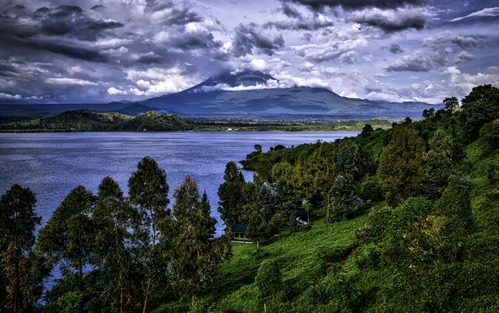 volcanoes that offer equal beauty i.e. Mount Bisoke, Mount Gahinga, Mount Karisimbi, Mount Mikeno, Mount Muhabura, Mount Nyamuragira and Mount Sabyinyo. Hiking Mount Nyiragongo offers arguably the best experience of all of them.
volcanoes that offer equal beauty i.e. Mount Bisoke, Mount Gahinga, Mount Karisimbi, Mount Mikeno, Mount Muhabura, Mount Nyamuragira and Mount Sabyinyo. Hiking Mount Nyiragongo offers arguably the best experience of all of them.
The volcano last erupted in 2002 and what remains now is a giant black rock that is visible from Goma in Congo and Gisenyi in Rwanda. The DRC offers a double experience of hiking the Nyiragongo volcano and gorilla trekking in Virunga National Park. If you can see both mountain gorillas and the lava lake on top of the volcano, you would have had a truly memorable African safari.
Getting your way to Mount Nyiragongo
Mount Nyiragongo was opened to tourism on recently (2014) by the authorities at the Virunga National Park. The mountain is accessible after a 20 kilometer drive from Gisenyi town in Rwanda then to Goma in DRC and finally to Kibati village. It is at Kibati village where the briefing is carried out before mountain climbing begins. The topics covered during briefing include what to pack, the resting points, what to expect in the cabins and the lava lake. Hiking is normally done in groups and escorted by porters. Porters are there to help with heavy luggage supplies and to encourage those who may not be fully prepared for the rugged terrain.
Hiking mount Nyiragongo starts at 9am to allow slower members rest and catch up. To reach the summit, hikers have to deal with five major challenges/sections. The first section is generally easy and less steep. Unfit and inexperienced climbers may throw in the towel at this point after noticing that the altitude increases as they keep climbing. The second part of the trek involves going through a rugged 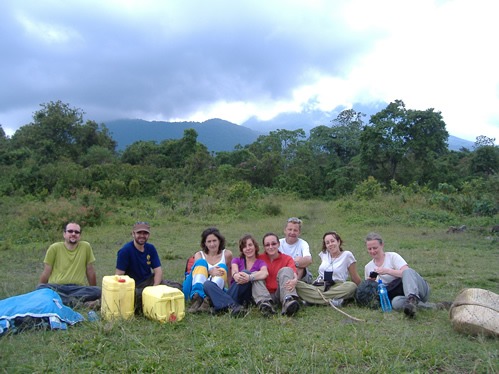 sections of the mountain with loose lava rocks that require proper hiking shoes with strong soles. In the third section, the stones remain loose but are now slippery because of the increasing steepness. Once hikers reach the fourth section, they now have to deal with high altitude and cold conditions. It is here that the importance of warm clothes, jackets and sweaters is felt. The fourth section is the point of no return because hikers can now see the cabins at the top of the volcano. It is also here that faster hikers are allowed to leave the slower ones behind because the summit isn’t far off. Once up, hikers are first taken to their rooms in the cabins before they can go to view the lava lake – an experience I will not describe for luck of the right words. I hope the videos embedded in this article will help. Please check out our 2 days Mount Nyiragongo Hike package.
sections of the mountain with loose lava rocks that require proper hiking shoes with strong soles. In the third section, the stones remain loose but are now slippery because of the increasing steepness. Once hikers reach the fourth section, they now have to deal with high altitude and cold conditions. It is here that the importance of warm clothes, jackets and sweaters is felt. The fourth section is the point of no return because hikers can now see the cabins at the top of the volcano. It is also here that faster hikers are allowed to leave the slower ones behind because the summit isn’t far off. Once up, hikers are first taken to their rooms in the cabins before they can go to view the lava lake – an experience I will not describe for luck of the right words. I hope the videos embedded in this article will help. Please check out our 2 days Mount Nyiragongo Hike package.
A night on top of the Nyiragongo volcano and descending down
After reaching the top of the volcano and baring witness to the amazing boiling magma, you need to have dinner and rest. There are 12 cabins at the summit each comprising of 2 single beds that are fitted with a mattress and a comfortable pillow. Before entering your cabin, the porters will prepare dinner and tea 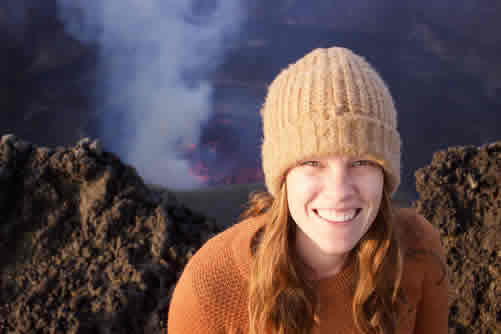 for everyone. This is the time to party and mingle with hikers from all corners of the world to share experiences and your stories. The summit is cold and with strong winds. You will need to put on our warm clothing and take hot tea whenever necessary. Well, every good thing has an end and so is marveling at the boiling lava lake of Nyiragongo. Descending the volcano takes only 3 hours as opposed to the 5-6 hours of climbing. You don’t need to be in a rush because you have to deal with the same small stones and steep sections that you encountered on your way up. A slow descent is recommended as it also offers you the beautiful views of the Virunga National park, Kahuzi Biega National Park, other Virunga volcanoes and the Mount Rwenzori.
for everyone. This is the time to party and mingle with hikers from all corners of the world to share experiences and your stories. The summit is cold and with strong winds. You will need to put on our warm clothing and take hot tea whenever necessary. Well, every good thing has an end and so is marveling at the boiling lava lake of Nyiragongo. Descending the volcano takes only 3 hours as opposed to the 5-6 hours of climbing. You don’t need to be in a rush because you have to deal with the same small stones and steep sections that you encountered on your way up. A slow descent is recommended as it also offers you the beautiful views of the Virunga National park, Kahuzi Biega National Park, other Virunga volcanoes and the Mount Rwenzori.
What are the requirements for climbing the Nyiragongo Volcano?
The most important requirements for climbing mount Nyiragongo are hiking permits, a passport, a yellow fever vaccination card and the Congo Visa. A direct hiking permit to the mountain is obtainable 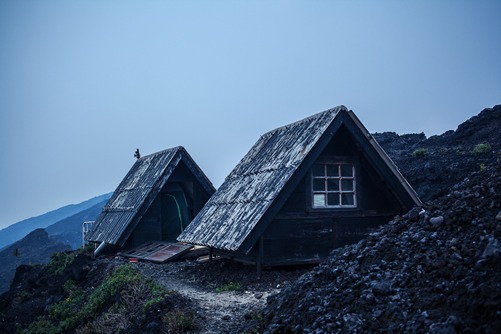 from Virunga National park or through any reliable tour operator at a non-refundable fee of $300. Congo Visas are difficult to acquire compared that of Uganda or Rwanda. Your tour company or the Virunga National Park should help you with applying for it. A single 14 days Congo tourist entry visa costs $105 per person. Other accompanying travel documents such as the yellow fever vaccination certificate and passport are necessary. If you are using a tour company to organize your Nyiragongo tour, expect to pay about $980 per person if you are traveling with someone. This amount covers transport, accommodation, meals, water and porters.
from Virunga National park or through any reliable tour operator at a non-refundable fee of $300. Congo Visas are difficult to acquire compared that of Uganda or Rwanda. Your tour company or the Virunga National Park should help you with applying for it. A single 14 days Congo tourist entry visa costs $105 per person. Other accompanying travel documents such as the yellow fever vaccination certificate and passport are necessary. If you are using a tour company to organize your Nyiragongo tour, expect to pay about $980 per person if you are traveling with someone. This amount covers transport, accommodation, meals, water and porters.
What should one pack for climbing mount Nyiragongo
Warm clothes: Lighter clothes may be used at the start of the hike and at low altitude. But as one climbs higher, the mountain gets freezing cold especially at the summit. Clothing that can withstand rain such as a jacket, sweater, warm socks, scarves and gloves will come in handy. Whilst a rain jacket is important for hiking mount Nyiragongo, let it be warm and not too bulky to increase on the weight of your luggage.
Comfortable hiking boots: Having mentioned the slippery trail, steep sections of the hike, stones along the trek, visitors are also advised to carry shoes with a good grip (rubber soles). The shoes should be water proof, comfortable and should be able to keep your feet warm.
Sleeping bag: At the top of the summit are cabins that are fitted with mattresses and comfortable pillows. But one needs a sleeping bag for more warmth and comfort.
Snacks and Water: Climbing mount Nyiragongo is no daunting task. It leaves one tired, hungry and thirsty. Food/snacks and water will help the body rejuvenate to enable you reach the summit in good condition.
Hire a porter: During the briefing at Kibati village, porters can be hired for $15 per day. The porters are accustomed to the challenges of climbing the mountain and can help visitors with carrying their luggage for the entire duration of the activity.
A hat and sunscreen: The mountain climbing experience either presents sunshine or rain. The hat and sunscreen will come in handy especially if you hike during the dry season.
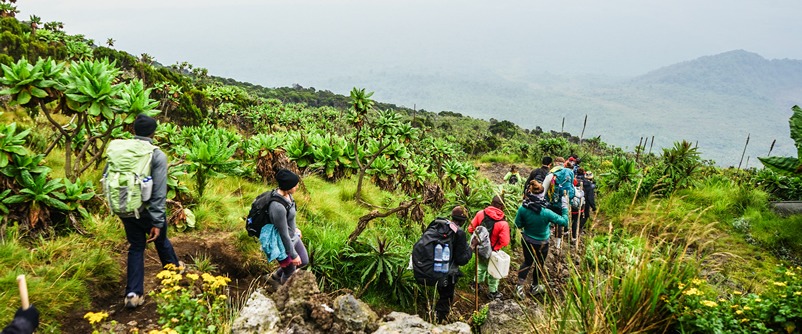 A camera and Binoculars: You need to capture all the beautiful scenery, the lush green vegetation, views from the summit, the bubbling lava and all the interesting things that you will find along the way. A good camera will therefore help you to capture your memorable moments that you may find difficult to explain in words to your friends. A good pair of binoculars should help you see distant mountains, Lake Kivu and the beautiful views of the Virunga National Park.
A camera and Binoculars: You need to capture all the beautiful scenery, the lush green vegetation, views from the summit, the bubbling lava and all the interesting things that you will find along the way. A good camera will therefore help you to capture your memorable moments that you may find difficult to explain in words to your friends. A good pair of binoculars should help you see distant mountains, Lake Kivu and the beautiful views of the Virunga National Park.
Backpack: This may seem obvious but you need one to keep all your belongings in one place during the journey. You need one luggage to carry all your belongings if possible so as not to be burdened by extra weight. A good back pack will help store all your gadgets and clothes
Portable charger and a torch: Remember that you will be far away from the real world for two days. You don’t want to see your phone, iPad or cameras lose power while you are at the summit because you didn’t come with their chargers and batteries. Charging your gadgets is possible from the cabins at the summit.
Additional Information About Hiking Mount Nyiragongo
The best time to Hike Mount Nyiragongo: Whilst the mountain can be accessed throughout the year, the rainy season comes with difficulties. The hiking trail can get too wet and slippery hence causing more exhaustion as hikers take longer than usual reaching the summit. In this regard, visitors always prefer the dry season which is between June to September and December to February.
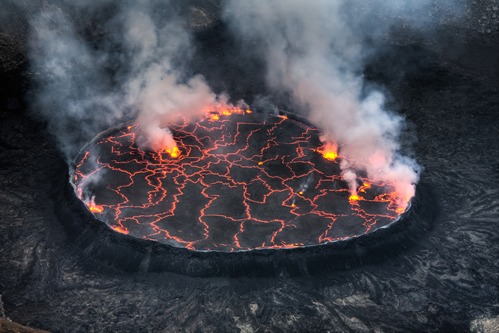 Physical and mental preparedness. It is advisable to be physically fit before one can commit to climb mount Nyiragongo. Physical exercises should begin weeks before climbing the mountain to prevent the body from going into a shock. Where possible, speak to your physician before taking on this exercise. You should also consider your body’s sensitivity to extreme weather changes. Every hiker must be mentally ready to stay on course and complete the climb regardless of the challenges that come with it.
Physical and mental preparedness. It is advisable to be physically fit before one can commit to climb mount Nyiragongo. Physical exercises should begin weeks before climbing the mountain to prevent the body from going into a shock. Where possible, speak to your physician before taking on this exercise. You should also consider your body’s sensitivity to extreme weather changes. Every hiker must be mentally ready to stay on course and complete the climb regardless of the challenges that come with it.
Use a stick for hiking: These are usually provided by the park Rangers to help you remain steady and balanced as you navigate steep slopes. Hiking sticks will also help relieve your legs/knees from unnecessary strain.
Keep your valuable safe: Hiking the Nyiragongo volcano often occurs in the company of complete strangers from across the globe. By that we mean fellow hikers or hired help/porters. It is therefore important to keep all valuables safe and within your reach because you just never know.


